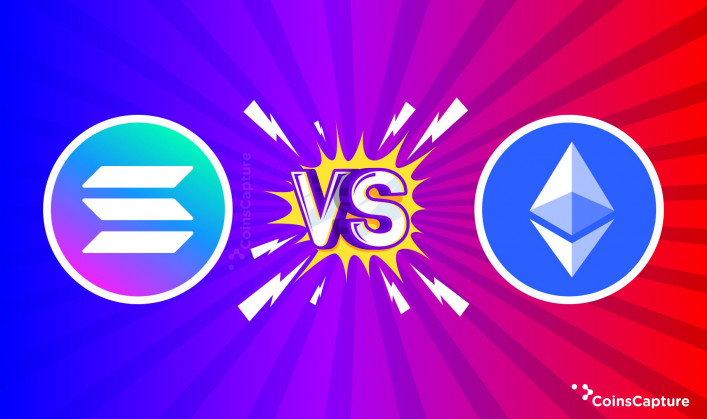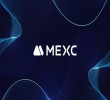7 November 2025
Top 3 DeFi Tokens to Watch out
When it comes to the future of Crypto, most people agree that decentralized apps (DApps) are the way to go. Even while the buzz around Cryptos is built on their volatility and market capitalization, indeed, it is true that Crypto is still a new piece of software, and like any other piece of software, its actual worth is defined by its utility requirements. From that point of view, it's easy to see how people perceive rivalry in the middle of the variety of Cryptocurrencies on the market.
Now just think about it- Google has mattered if Search wasn't what it is today? From that perspective, one can see how one Cryptocurrency competes with another, just like Yahoo Search or AOL competed with Google in the past. That is especially true for Ethereum, Solana, and Cardano, the three Cryptos competing for supremacy in the 'smart contract' market. Hence, the algorithm that runs all Cryptos, including these three, is at their core. In fact, the names Ethereum, Solana, and Cardano refer to Blockchain systems rather than currency. For trading, the Ethereum chain employs the ETH token while the Bitcoin chain uses the BTC token. The SOL and ADA tokens are used by Solana and Cardano, respectively. As a result, when discussing the difference between the three it's necessary to discuss how their algorithms differ.
Ethereum: How did it all begin?
When smart contracts were made available on Ethereum, it played as a game-changer in the Crypto industry. Because Bitcoin was viewed as a currency alternative, Ethereum too became an alternative to that and everything beyond. Thus, ETH gave developers the ability to use Blockchain technology to create things that will change the world in the future. However, is it safe to expect that Ethereum will continue to rule the Crypto space in the coming years, given the arrival of an upcoming Blockchain system like Solana
Also Read: Best Cryptos To Invest In 2022
Smart Contracts:
Smart contracts currently are one of the hottest topics in the Blockchain and Cryptocurrency worlds. So, what exactly are they? Smart contracts are what distinguish Bitcoin from other Cryptocurrencies like Ethereum, Solana, Cardano, and even the Binance currency. Their algorithms are made up of tiny program code that runs automatically when certain criteria are satisfied. In simple terms, these are' if, when, and then' statements that are executed automatically at the appropriate times. The parties involved in conducting transactions can put as many of these statements in the form of conditions as they want.
What role do Ethereum, Solana, and Cardano play in this scenario?
Like previously said, smart contracts are one of the reasons why the Ethereum, Solana and Cardano platforms are similar. The other is that they utilized -or will use in the case of Ethereum a "proof of stake" system. Unlike Bitcoin, smart contracts bring up a variety of possibilities, which is best suited for applications that involve the exchange of things, such as paying for apps and services. As a result, any of the three platforms stated above can be utilized to create DApps, whether it's a DeFi app or a social media site. Considering, the Bitcoin platform allows you to construct instances where you could take a Bitcoin and exchange it for something via algorithms. On smart contracts, you can literally have a contract being executed and for the computers processing them; they're just another transaction on the network.
How does Cardano affect Ethereum’s position in the Crypto world?
Since its introduction in 2013, Ethereum has grown exponentially, but despite all of the good things it had to offer, there was a major flaw as ETH utilizes the Proof of Work system. Miners are large organizations that use a series of computer systems to authenticate Crypto transactions. The miners can only provide enough energy to authenticate or validate the transactions. They wouldn't be able to change or modify the Blockchain or the transactions that took place on it. Miners are rewarded with new Cryptocurrency for their efforts. This is what proof of the labour system normally entails. The disadvantage of this system is that in the case of Ethereum and Bitcoin, each miner involved in a transaction is rewarded, a vast amount of computer power is required to reward each time a transaction is completed. Cardano employs a system known as Proof and Stake (POS), which is substantially more environmentally friendly.
To be eligible for rewards under the POS system, the miner must first stake their own Crypto. Later, the platform then filters out the most powerful miners, which is always a certain number of miners, and allows them to validate the transactions. As a result, the overall amount of processing energy and the overall quantity of electrical energy required to operate modern computer systems decreases dramatically. This is one of the most important reasons why it is more ecologically friendly than Ethereum or Bitcoin and the same can be said about Solana.
Also read: 6 Best Crypto Launchpads In 2021
Comparison between Solana and Ethereum:
As you know, both of these Blockchains are decentralized open-source public Blockchain technologies. They're also incredibly modular, allowing them to be programmed to work with a wide range of applications. However, when it comes to other variables like performance and general scalability potential ETH and SOL are opposites. Ethereum acts like the forerunner in the Blockchain sector with its underlying Blockchain serving as the foundation for many DApps and networks currently in use. Blockchain concepts like Defi (decentralized finance) and NFTs (non-fungible tokens) heavily depend on Ethereum for its functioning.
Unfortunately, many people are concerned about its scaling capability, network congestion, and slow processing speed. Furthermore, many ETH users have had to pay a significant amount in gas fees, even for simple transactions. When compared to this, Solana can manage far more processing power. It may also be scaled eternally while maintaining security and decentralization. Therefore, users will not need to construct Layer 2 solutions because of its unique Blockchain architecture, avoiding sharding.
Why are Solana and Cardano referred to as “Ethereum Killers”?
These two Crypto platforms are known as Ethereum killers because of their POS systems. However, they're more efficient right now, and they address one of the major issues that many governments, experts, and billionaires have about Cryptos- i.e. their environmental impact. Nevertheless, Ethereum plans to release version 2.0 of the network next year, which will have the same system. It's expected to cut Ethereum's energy consumption by up to 99 percent. The Ethereum London Hard Fork, which took place last month, paved the way for version 2.0 by bringing the proof of stake protocol to the platform. Platforms with smart contracts are expected to gain wider adoption, making being environmentally sound essential.
Also read: Top 7 Metaverse Tokens To Invest In 2021
Who is likely to win this race?
Taking Bitcoin trading courses, attending a Cryptocurrency course or even earning a Blockchain certification will give you necessary and fundamental information to evaluate the Crypto and Blockchain environment. At this stage, two significant problems must be addressed. To begin with ETH, Cardano, and Solana are all working on or have already implemented a Proof of Stake system while supporting smart contracts. The issue with ETH, on the other hand, is scalability. A gas fee must be paid every time a transaction is carried out on the ETH network, regardless of the nature of the transaction. The gas prices can currently reach up to $150 and the gas rates are variable due to the volume of transactions taking place on this platform. In comparison, transaction fees for the SOL and Cardano platforms are quite low, as they now cost $1 or even less. The SOL platform has addressed this scalability issue by introducing a Cryptographic time-stamping system to handle 65000 transaction deals per second. On the other hand, the issue with Solana and Cardano is the adoption. Both of these Cryptocurrencies have market capitalizations that are less than half of the market cap of ETH. As a result, for both of them, the market is unpredictable.
Disclaimer: The author’s thoughts and comments are solely for educational reasons and informative purposes only. They do not represent financial, investment, or other advice.






